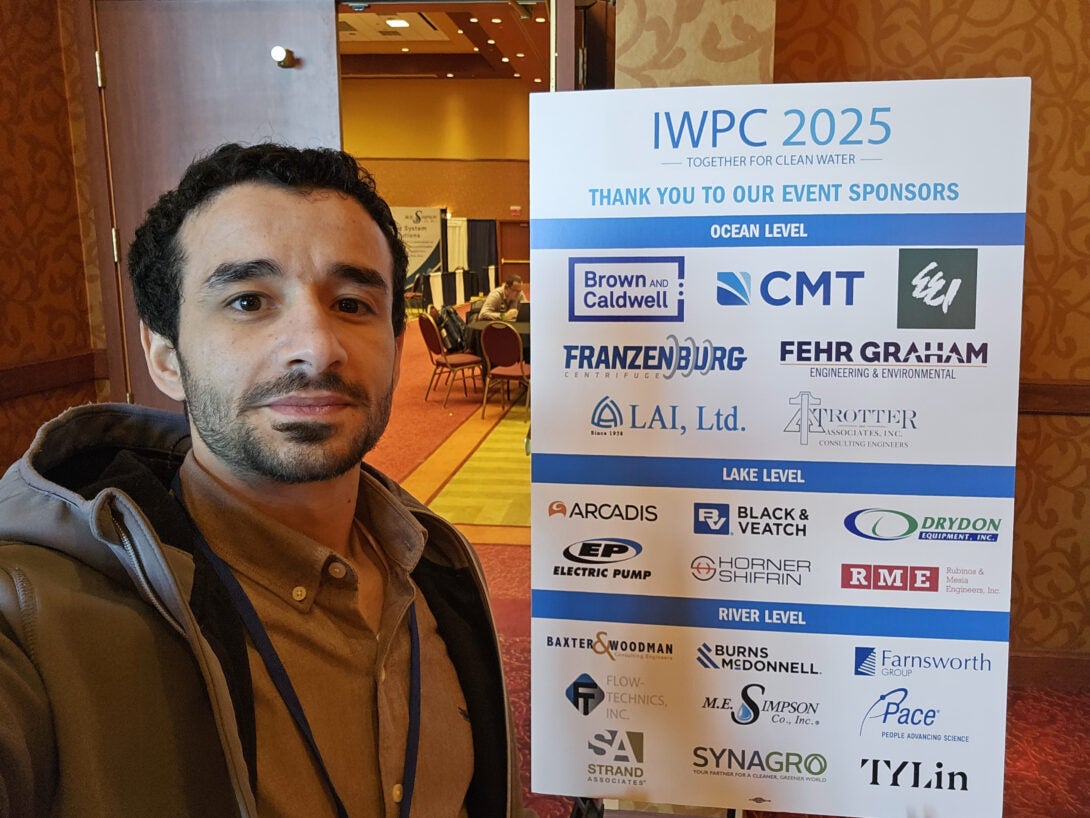Optimizing water systems with machine learning
1

PhD student Aly Salem recently captured first place for his research on State Estimation and Sensor Placement Optimization Using GNNs in the Intelligent Water Systems Challenge during the IWPC 2025 conference hosted by the Illinois Water Environment Association (IWEA).
“It was a great moment to have my work recognized at such a prestigious event,” he said. “I also enjoyed connecting with industry professionals, exchanging ideas, and discussing the future of our field.”
Salem’s main research objective is to utilize machine learning techniques to optimize the performance of water systems with a focus on drinking water and wastewater.
“When you turn on the tap, you get water from a water treatment plant, then when it drains, it goes to a wastewater treatment plant; my work is to make this cycle as optimal as possible,” said Salem, who is working under the direction of Assistant Professor Ahmed Abokifa in the Smart Water Infrastructure Modeling Research Laboratory at UIC.
The main objective of drinking water systems that bring water from the treatment plant into homes is to ensure the water is clean. However, the pipes carrying the water to houses may contain a lot of pathogens, viruses, and bacteria. To make sure the water is clean and potable, chlorine is used as a disinfectant, which helps prevent the spread of waterborne diseases.
“I utilize machine learning to ensure chlorine levels stay within safe and effective limits,” Salem said. “Too much chlorine can be harmful; too little, and it won’t properly disinfect the water. I build models to help maintain the right balance to keep communities safe.”
In addition to drinking water, Salem is investigating wastewater. However, for this part of the research, he is looking at wastewater from the industrial sector instead of individual households. Factories and other industrial companies use water to do many things, and they drain this water back into the system. This wastewater goes to a treatment plant to be treated, and then it’s disposed to a river.
“What concerns us is that some of these discharges might contain chemicals or pollutants that aren’t effectively treated and shouldn’t exist in the system,” he said. “My research focuses on using machine learning to trace these pollutants back to their sources. Once we identify where they’re coming from, we can take action to eliminate them and protect the environment. Part of my research is using machine learning to understand how we can locate and identify the sources that dispose of this wastewater. Once we identify the sources, we can then eliminate the sources and fix the problem.”
Salem is slated to graduate in the fall, and he already has a job lined up with Arcadis as a hydraulic modeler, where he may be applying this research.
“Arcadis is a consulting firm, but my role will also involve research and development, which is something I’m passionate about,” he said. “It’s exciting to see my research valued by a leading company in the field.”